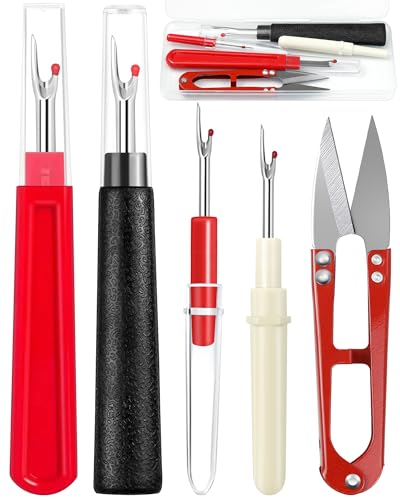Are you ready to dive into the world of lightweight fabrics? Batiste might just become your new favorite material for your sewing projects. Its delicate texture and smooth finish make it perfect for everything from elegant garments to charming home décor.
Working with batiste can seem daunting at first, but once you get the hang of it, you’ll appreciate its versatility and ease. Whether you’re a seasoned sewist or just starting out, this guide will help you master sewing with batiste and unlock your creative potential.
Understanding Batiste Fabric
Batiste stands out for its lightweight and versatile nature, perfect for a variety of sewing projects. Its delicate texture makes it a favorite among both beginners and experienced sewists.
Characteristics Of Batiste
Batiste fabric features a fine, soft weave that provides a smooth and silky feel. It maintains excellent breathability, making it ideal for comfortable garments. The fabric’s lightweight quality allows it to drape elegantly, enhancing the overall appearance of your creations. Additionally, batiste resists wrinkles, ensuring a polished finish with minimal effort. Its high absorbency makes it suitable for projects that require moisture management, such as baby clothing and delicate apparel.
Types Of Batiste
- Cotton Batiste: Known for its breathability and softness, perfect for summer dresses and lightweight blouses.
- Silk Batiste: Offers a luxurious sheen and smooth texture, ideal for elegant garments and intricate home décor.
- Polyester Batiste: Provides durability and wrinkle resistance, suitable for everyday wear and crafting purposes.
- Linen Batiste: Combines lightweight properties with natural texture, great for casual attire and eco-friendly projects.
Benefits Of Sewing With Batiste
Batiste offers numerous advantages that make it a top choice for your sewing projects. Its unique properties enhance both the functionality and aesthetics of your creations.
Lightweight Nature
Batiste’s lightweight quality ensures comfortable and breathable garments. This fabric allows for elegant draping, making it ideal for summer dresses, blouses, and scarves. Its fine weave reduces bulk, enabling smooth layering in layered outfits. Additionally, lightweight batiste simplifies handling during intricate embroidery and delicate stitching tasks.
Versatility In Projects
You can use batiste for a wide range of sewing projects. From baby clothing and linens to lightweight curtains and lingerie, batiste adapts to various applications. Its wrinkle-resistant nature maintains a polished look in finished products, while the different fiber options—cotton, silk, polyester, and linen—cater to specific project needs. Whether you’re crafting eco-friendly garments or intricate home décor, batiste provides the flexibility required for diverse creative endeavors.
Popular Sewing Projects With Batiste
Batiste’s lightweight and versatile nature makes it perfect for various sewing projects. Explore these popular uses of batiste in your creative work.
Dresses And Skirts
Batiste excels in crafting elegant dresses and skirts due to its fine, soft weave. Benefits include:
- Smooth Draping: Ensures your garments flow gracefully, ideal for summer dresses and flowy skirts.
- Comfortable Fit: Keeps you cool and comfortable in warm weather.
- Intricate Details: Supports pleats, gathers, and delicate trims, enhancing your garment’s aesthetics.
- Breathability: Allows air circulation, maintaining comfort without sacrificing style.
Linings And Interfacings
- Enhances Smoothness: Linings made from batiste allow your garments to glide effortlessly over your skin.
- Subtle Support: Serves as interfacings for collars, cuffs, and waistbands, maintaining shape while remaining unobtrusive.
- Professional Finish: Contributes to neat seams and a polished look in your sewing projects.
- Versatility: Suitable for both lightweight and slightly structured garments, accommodating different design needs.
Tips For Sewing With Batiste
Batiste requires specific techniques to achieve professional results. Implement these tips to enhance your sewing experience with this delicate fabric.
Choosing The Right Needle
- Select Fine Needles: Use a size 60/8 or 70/10 microtex needle to prevent fabric snagging and ensure smooth stitching.
- Opt for Sharp Tips: Sharp needles penetrate batiste easily, reducing the risk of skipped stitches and uneven seams.
- Match Thread Appropriately: Pair your needle with a high-quality, fine thread to complement batiste’s lightweight nature, ensuring strong, invisible seams.
Handling And Cutting Techniques
- Stabilize the Fabric: Place tissue paper or a stabilizer underneath batiste when cutting to prevent shifting and maintain precise patterns.
- Use Sharp Scissors: Employ a dedicated pair of sharp fabric scissors to achieve clean, accurate cuts without fraying.
- Press Seams Gently: Use a cool iron to press seams, preserving batiste’s smooth appearance and avoiding heat damage that can distort the fabric.
- Cut with Confidence: Lay multiple layers carefully, secure them with pins or clips, and follow pattern lines precisely to ensure consistency across all pieces.
Caring For Batiste Creations
Maintaining your batiste projects ensures their longevity and appearance. Follow these care guidelines to keep your creations looking their best.
Washing Instructions
- Hand Wash: Use cold water and mild detergent to gently cleanse your batiste items. Soak for 5-10 minutes, then rinse thoroughly.
- Machine Wash: Select a delicate cycle with cold water. Place items in a mesh laundry bag to prevent damage.
- Detergent: Opt for bleach-free, non-enzymatic detergents to preserve fabric integrity.
- Drying: Air dry by laying flat on a clean surface or hanging on padded hangers. Avoid direct sunlight to prevent fading.
- Frequency: Wash lightly soiled items after each use and heavily soiled items immediately to maintain fabric quality.
Ironing And Storage
- Ironing Temperature: Set your iron to low heat (around 300°F) suitable for delicate fabrics.
- Steam Use: Apply steam sparingly to remove wrinkles without saturating the fabric.
- Ironing Technique: Iron on the reverse side to prevent sheen. Use a pressing cloth for added protection.
- Storage Environment: Store batiste creations in a cool, dry place away from direct sunlight to avoid discoloration.
- Folding: Fold items carefully along seams to minimize creases. Store in breathable fabric bags to prevent moisture buildup.
- Hanging: Use padded hangers for garments to maintain shape and prevent stretching.
| Care Aspect | Recommendation |
|---|---|
| Washing Method | Hand wash or delicate machine cycle |
| Water Temperature | Cold water |
| Detergent Type | Bleach-free, mild detergent |
| Drying Method | Air dry flat or hang with padded hangers |
| Ironing Temperature | Low heat (around 300°F) |
| Storage Condition | Cool, dry place away from sunlight |
Following these care instructions will help preserve the delicate nature and vibrant appearance of your batiste projects.
Conclusion
Sewing with batiste opens up a world of delicate and elegant possibilities. You can create beautiful lightweight garments and charming home décor items with ease. Embrace this versatile fabric and let your creativity shine through your projects.
With a bit of practice you’ll find handling batiste rewarding and enjoyable. Appreciate the smooth texture and the professional finish it brings to your creations. Happy sewing!


















